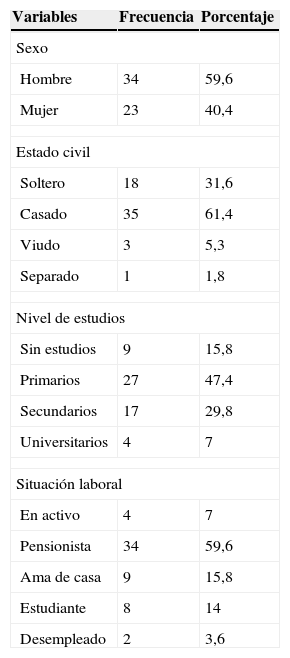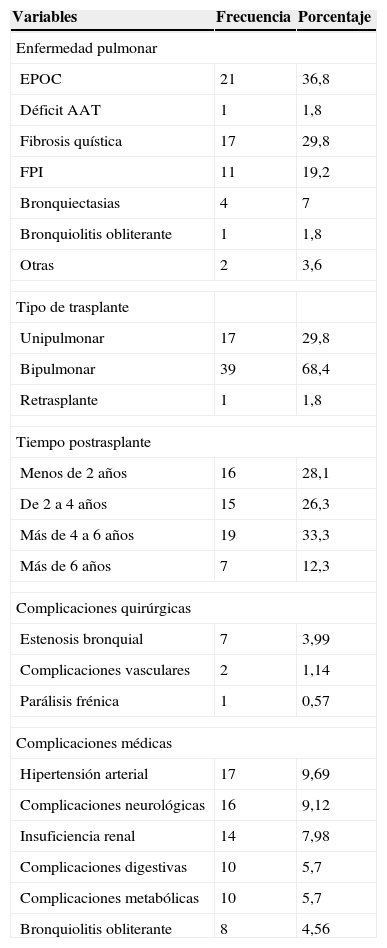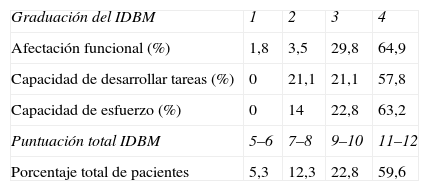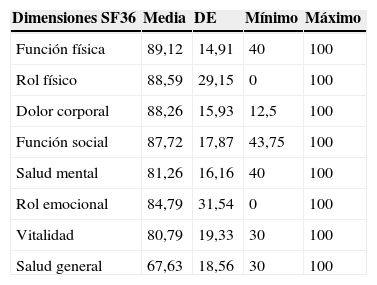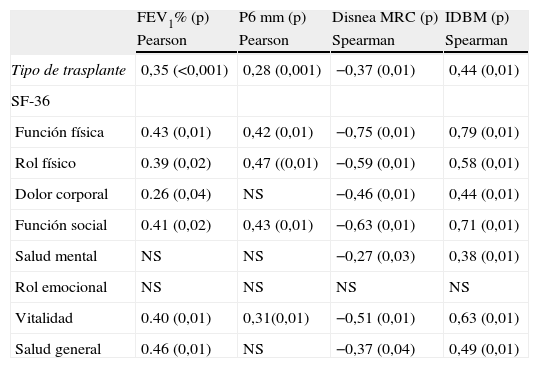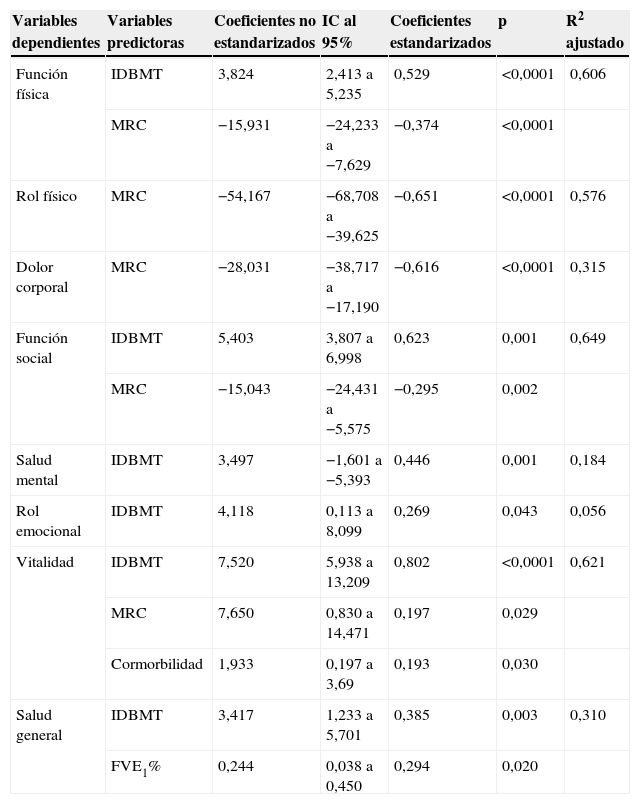Conocer la calidad de vida relacionada con la salud (CVRS) en trasplantados de pulmón y su relación con la disnea y la prueba de 6 min marcha.
Material y métodoEstudio descriptivo. Participantes: pacientes trasplantados de pulmón. Mediciones: variables sociodemográficas, volumen espiratorio forzado en el primer segundo, parámetros funcionales (disnea y prueba de 6min marcha) y test genérico de calidad de vida SF-36. Prueba t de una muestra para comparar las puntuaciones medias en cada dimensión del SF-36 con los valores de referencias de la población española. Correlación de Pearson entre CVRS percibida y parámetros funcionales. Análisis multivariante para identificar variables predictivas de la CVRS.
ResultadosParticiparon 59 personas, 36 hombres y 23 mujeres. La media de edad fue de 43,77 años (DE±15,27) y el tiempo medio postrasplante de 3,7 años (DE±2,18). Las puntuaciones obtenidas en el SF-36 para las dimensiones de función física, dolor, salud mental y vitalidad fueron superiores a las de la población de referencia (p<0,05), no encontrándose diferencias para el resto. Las dimensiones función física, rol físico y función social presentaron correlación con el grado de disnea (p=0,01), así como en el análisis multivariante (R2=0,60).
ConclusionesLa CVRS declarada por los pacientes trasplantados de pulmón es similar a la de la población de referencia española. El grado de disnea es el parámetro que mejor se relaciona con la calidad de vida.
To know the health-related quality of life (HRQL) to the in lung transplantation recipient and their relationship with the dyspnea and with the 6-min walk test.
Material and methodDescriptive study. Participants: Lung transplanted patients. Mensurations: socio-demografic data, FEV1, functional parameters (dyspnea and 6-min walk test), and generic test of HRQL SF-36 Health Index. A t-test to compare the mean punctuations in each dimesion the SF-36 with the reference values of the spanish population. Pearson correlation between perceived HRQL and functional parameters. Multivariate analysis to identify predicted variables of the HRQL.
Results59 people, 36 men and 23 women participated. The mean age was 43.77 years (SD±15.27) and the mean time postrasplante of 3.7 years (SD±2.18). The punctuations obtained in the lung transplanted patients for the dimensions physical function, pain, mental health and vitality they went upper to them the population reference values (p value<0.05), not being differences for the rest. The dimensions physical function, role physical and social function presented high correlations with the degree of dyspnea (p value=0.01) as well as in the multivariate analysis (R2=0.60).
ConclusionsThe HRQL declared by the lung transplanted patients it is similar to the reference spanish population. The dyspnea it is the parameter that better is related with the quality of life.
Artículo
Comprando el artículo el PDF del mismo podrá ser descargado
Precio 19,34 €
Comprar ahora








